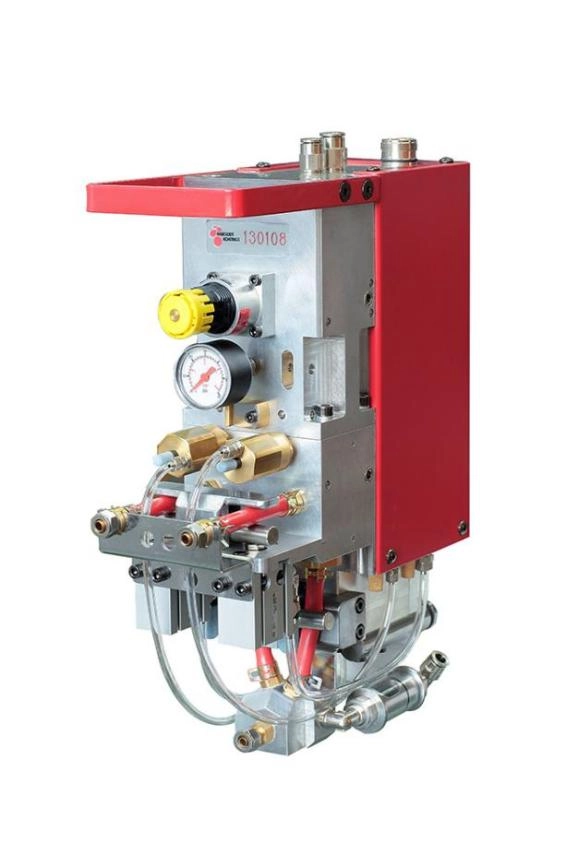Content Menu
● Introduction
● Understanding Powder Coating
>> What is Powder Coating?
>> Advantages of Powder Coating
● The Role of Smart Control Systems
>> What are Smart Control Systems?
>> Benefits of Smart Control Systems in Powder Coating
● Cost Considerations
>> Initial Investment
>> Operational Costs
>> Return on Investment (ROI)
● Performance Metrics
>> Key Performance Indicators (KPIs)
>> Benchmarking Performance
● Challenges in Implementation
>> Technical Challenges
>> Resistance to Change
>> Data Security Concerns
● Future Trends in Smart Control Systems
>> Advancements in Technology
>> Increased Customization
>> Sustainability Focus
● Conclusion
● Frequently Asked Questions
>> 1. What is the primary benefit of using a smart control system in powder coating?
>> 2. How does a smart control system reduce operational costs?
>> 3. What are the key performance indicators to track for smart control systems?
>> 4. What challenges might manufacturers face when implementing smart control systems?
>> 5. How can manufacturers ensure a successful transition to smart control systems?
Introduction
In the world of manufacturing, powder coating has emerged as a popular finishing technique due to its durability, efficiency, and environmental benefits. As industries strive for higher quality and lower costs, the integration of smart control systems into powder coating processes has become increasingly relevant. This article explores the cost versus performance of smart control systems in powder coating, providing insights into their benefits, challenges, and future trends.

Understanding Powder Coating
What is Powder Coating?
Powder coating is a dry finishing process that uses finely ground particles of pigment and resin, which are electrostatically charged and sprayed onto a surface. The coated object is then heated in an oven, where the powder melts and forms a hard, protective layer. This method is widely used in various industries, including automotive, furniture, and appliances, due to its superior finish and resistance to chipping, scratching, and fading.
Advantages of Powder Coating
1. Durability: Powder-coated surfaces are more resistant to wear and tear compared to traditional liquid paints.
2. Environmental Benefits: Powder coating produces minimal volatile organic compounds (VOCs), making it a more environmentally friendly option.
3. Cost-Effectiveness: While the initial investment may be higher, the long-term savings in maintenance and replacement costs can be significant.
4. Variety of Finishes: Powder coating offers a wide range of colors and textures, allowing for greater customization.
The Role of Smart Control Systems
What are Smart Control Systems?
Smart control systems refer to automated technologies that enhance the efficiency and effectiveness of manufacturing processes. In powder coating, these systems utilize sensors, data analytics, and machine learning to optimize various parameters, such as temperature, humidity, and application techniques.
Benefits of Smart Control Systems in Powder Coating
1. Enhanced Precision: Smart systems can monitor and adjust the coating process in real-time, ensuring consistent quality.
2. Reduced Waste: By optimizing the application process, smart systems minimize overspray and material waste.
3. Improved Energy Efficiency: These systems can adjust energy consumption based on real-time data, leading to lower operational costs.
4. Predictive Maintenance: Smart control systems can predict equipment failures before they occur, reducing downtime and maintenance costs.
Cost Considerations
Initial Investment
Implementing a smart control system in a powder coating operation requires a significant upfront investment. This includes the cost of the technology itself, installation, and training for personnel. However, many manufacturers find that the long-term benefits outweigh these initial costs.
Operational Costs
While smart control systems can reduce operational costs through improved efficiency, they also require ongoing maintenance and updates. Manufacturers must consider these factors when evaluating the overall cost-effectiveness of such systems.
Return on Investment (ROI)
Calculating the ROI of a smart control system involves assessing both direct and indirect benefits. Direct benefits include reduced material waste and lower energy costs, while indirect benefits may encompass improved product quality and customer satisfaction. A thorough analysis can help manufacturers determine the potential financial gains from investing in smart technology.
Performance Metrics
Key Performance Indicators (KPIs)
To evaluate the effectiveness of a smart control system in powder coating, manufacturers should track several KPIs, including:
1. Coating Thickness: Ensuring consistent thickness across products is crucial for quality.
2. Material Utilization: Measuring the amount of powder used versus the amount applied can indicate efficiency.
3. Energy Consumption: Monitoring energy usage helps identify areas for improvement.
4. Downtime: Tracking equipment downtime can highlight the effectiveness of predictive maintenance features.
Benchmarking Performance
Manufacturers can benchmark their performance against industry standards to assess the effectiveness of their smart control systems. This involves comparing KPIs with those of similar operations to identify areas for improvement and set realistic performance goals.
Challenges in Implementation
Technical Challenges
Integrating smart control systems into existing powder coating operations can pose technical challenges. These may include compatibility issues with existing equipment, the need for specialized training, and the complexity of data management.
Resistance to Change
Employees may resist adopting new technologies due to fear of job loss or the need to learn new skills. Effective change management strategies, including training and communication, are essential to facilitate a smooth transition.
Data Security Concerns
As smart control systems rely on data collection and analysis, manufacturers must address potential data security risks. Implementing robust cybersecurity measures is crucial to protect sensitive information and maintain operational integrity.
Future Trends in Smart Control Systems
Advancements in Technology
The future of smart control systems in powder coating is likely to be shaped by advancements in technology. Innovations such as artificial intelligence (AI), the Internet of Things (IoT), and advanced robotics will enhance the capabilities of these systems, leading to even greater efficiency and precision.
Increased Customization
As customer demands for personalized products grow, smart control systems will enable manufacturers to offer greater customization options. This includes the ability to adjust coating parameters on-the-fly based on specific customer requirements.
Sustainability Focus
With increasing emphasis on sustainability, future smart control systems will likely incorporate features that further reduce environmental impact. This may include enhanced recycling processes for powder materials and energy-efficient operations.
Conclusion
The integration of smart control systems in powder coating processes presents a compelling opportunity for manufacturers to enhance performance while managing costs. By understanding the benefits, challenges, and future trends associated with these systems, businesses can make informed decisions that align with their operational goals. As technology continues to evolve, the potential for smart control systems to revolutionize the powder coating industry is immense.

Frequently Asked Questions
1. What is the primary benefit of using a smart control system in powder coating?
The primary benefit is enhanced precision and consistency in the coating process, leading to improved product quality and reduced waste.
2. How does a smart control system reduce operational costs?
By optimizing energy consumption and minimizing material waste, smart control systems can significantly lower operational costs over time.
3. What are the key performance indicators to track for smart control systems?
Key performance indicators include coating thickness, material utilization, energy consumption, and equipment downtime.
4. What challenges might manufacturers face when implementing smart control systems?
Manufacturers may encounter technical challenges, resistance to change from employees, and data security concerns.
5. How can manufacturers ensure a successful transition to smart control systems?
Effective change management strategies, including training and clear communication, are essential for a smooth transition to smart control systems.
Hot Tags: China, Global, OEM, private label, manufacturers, factory, suppliers, manufacturing company










































 .
. 